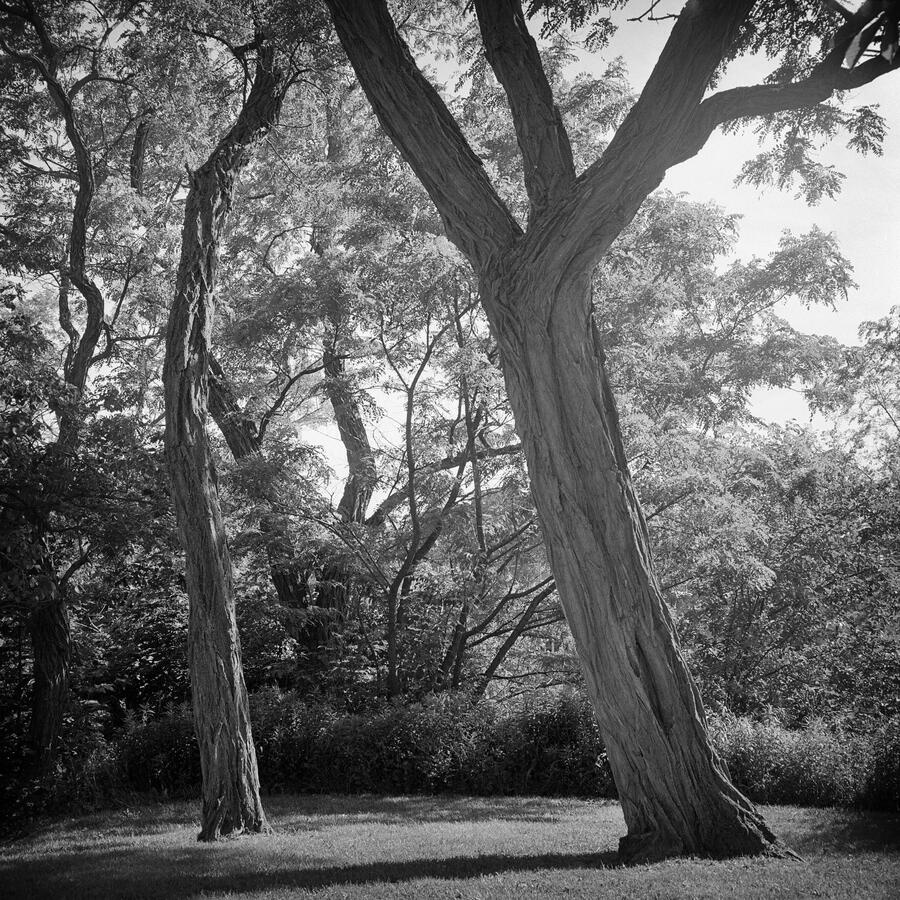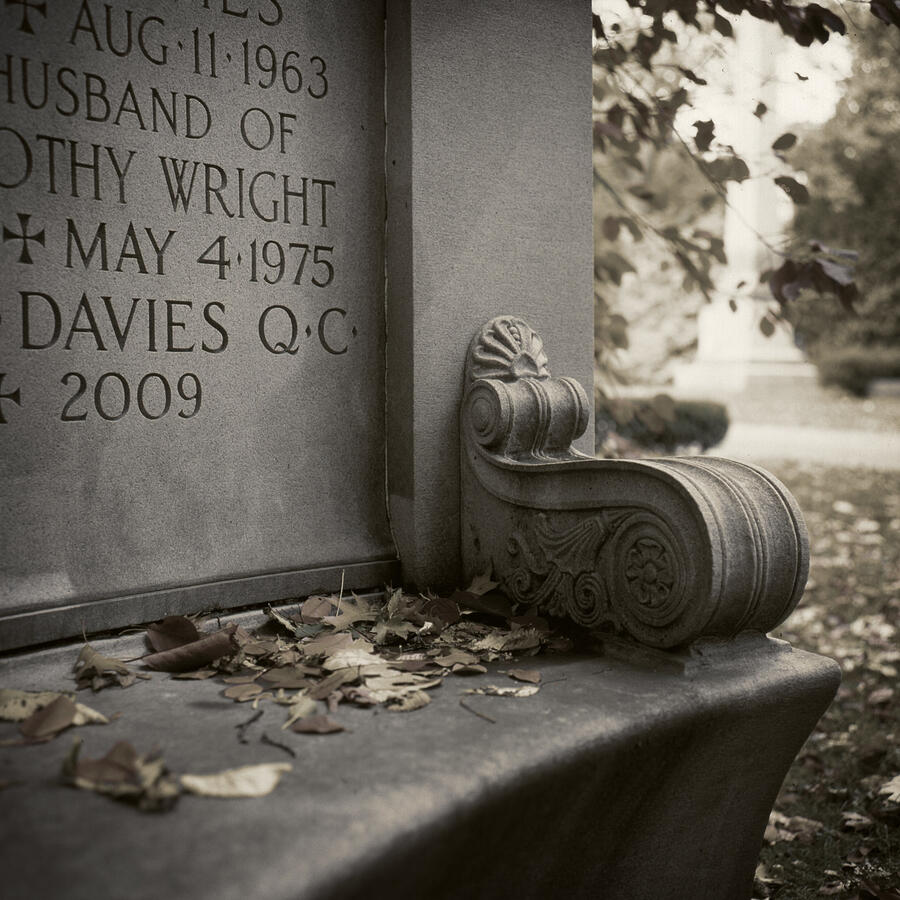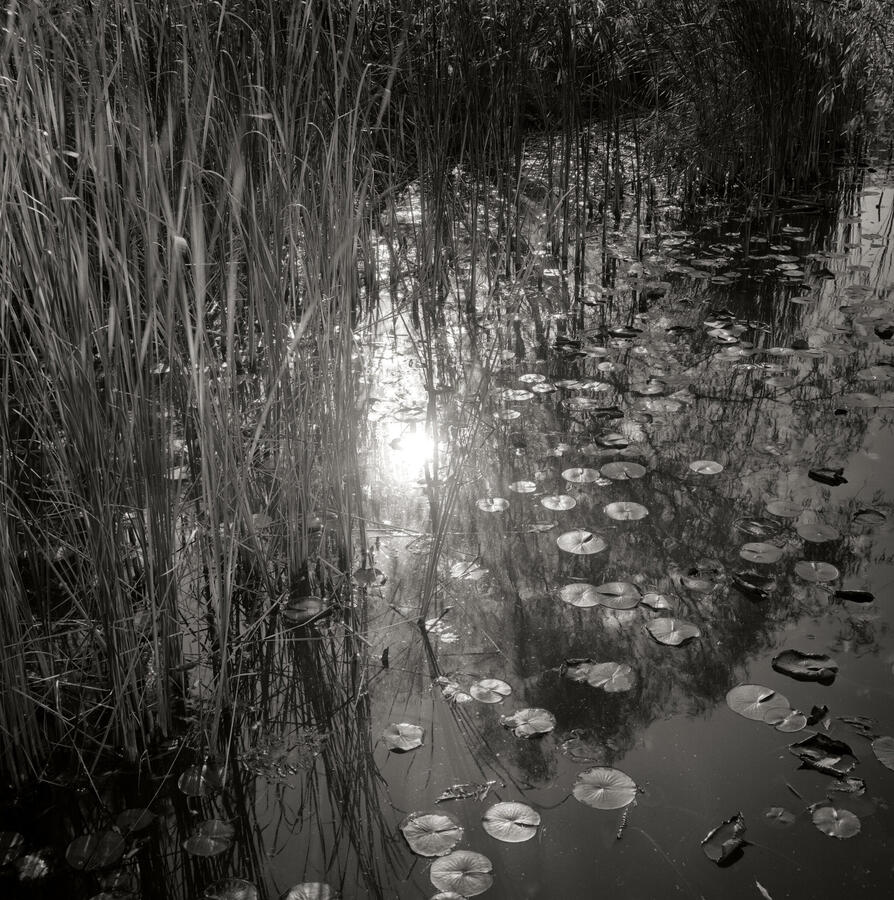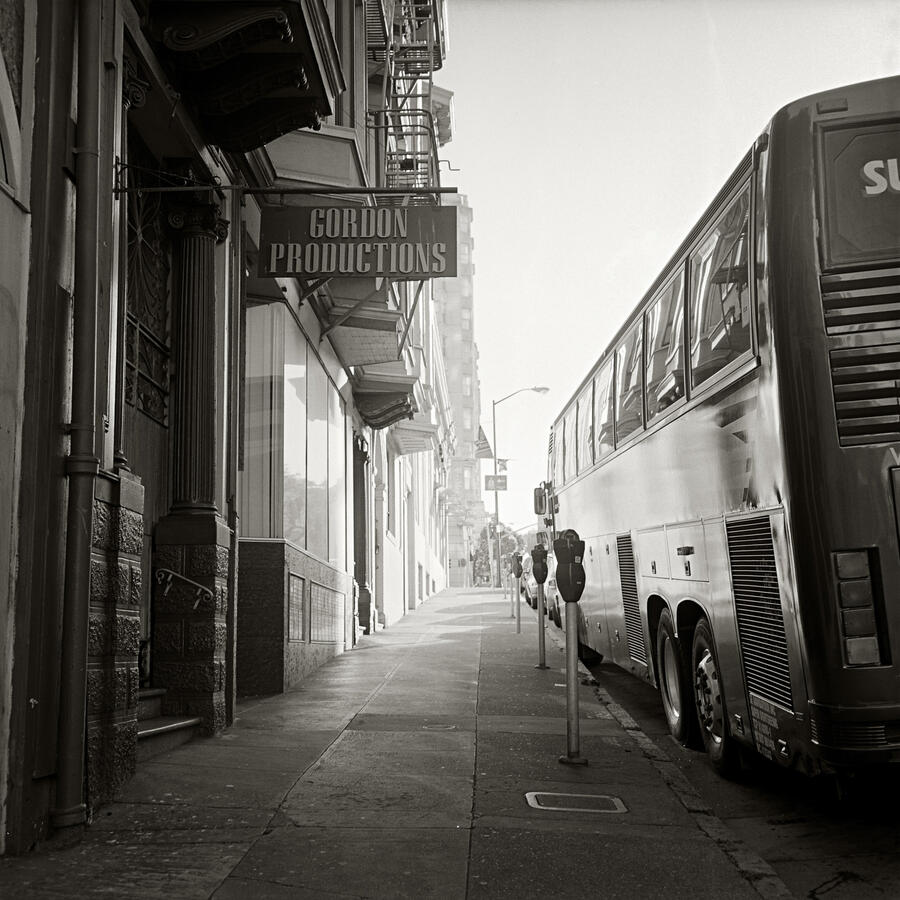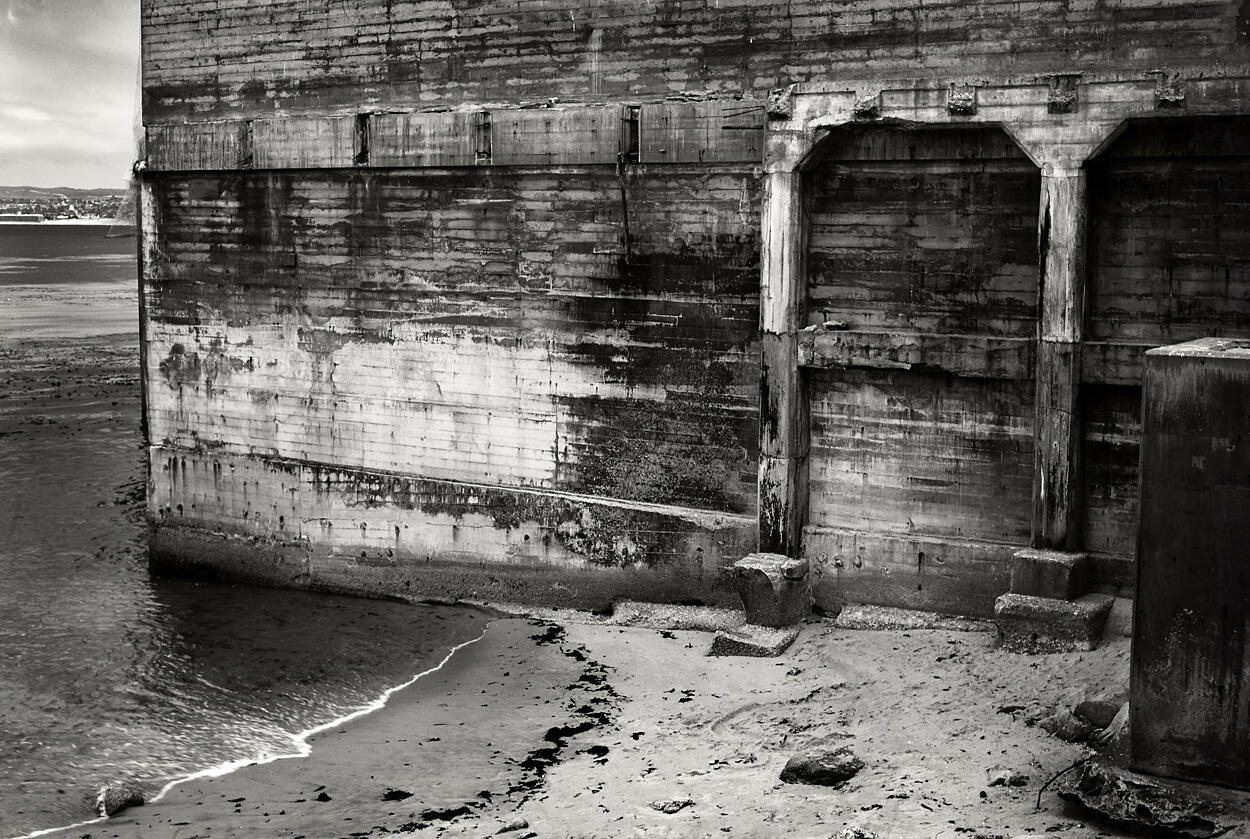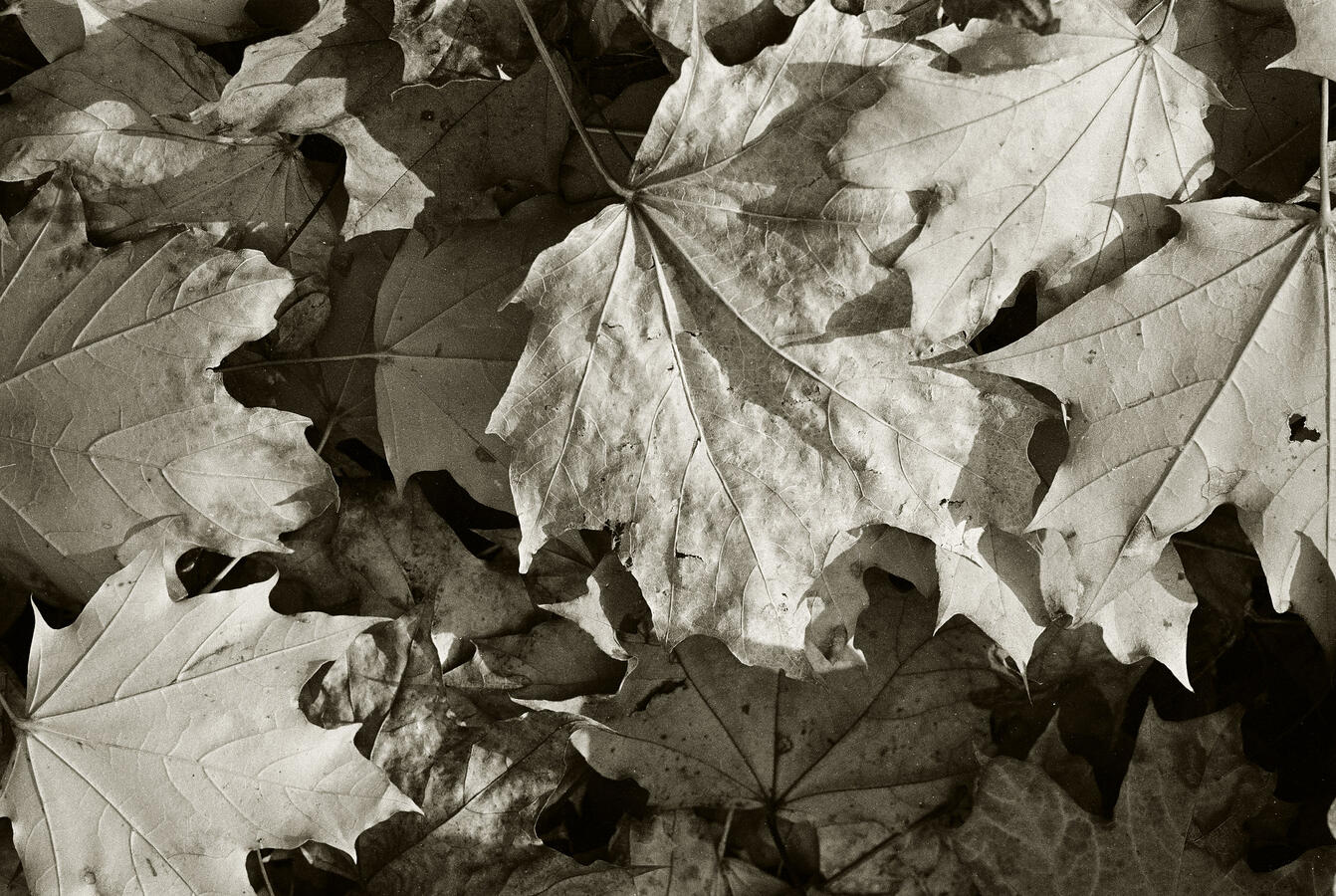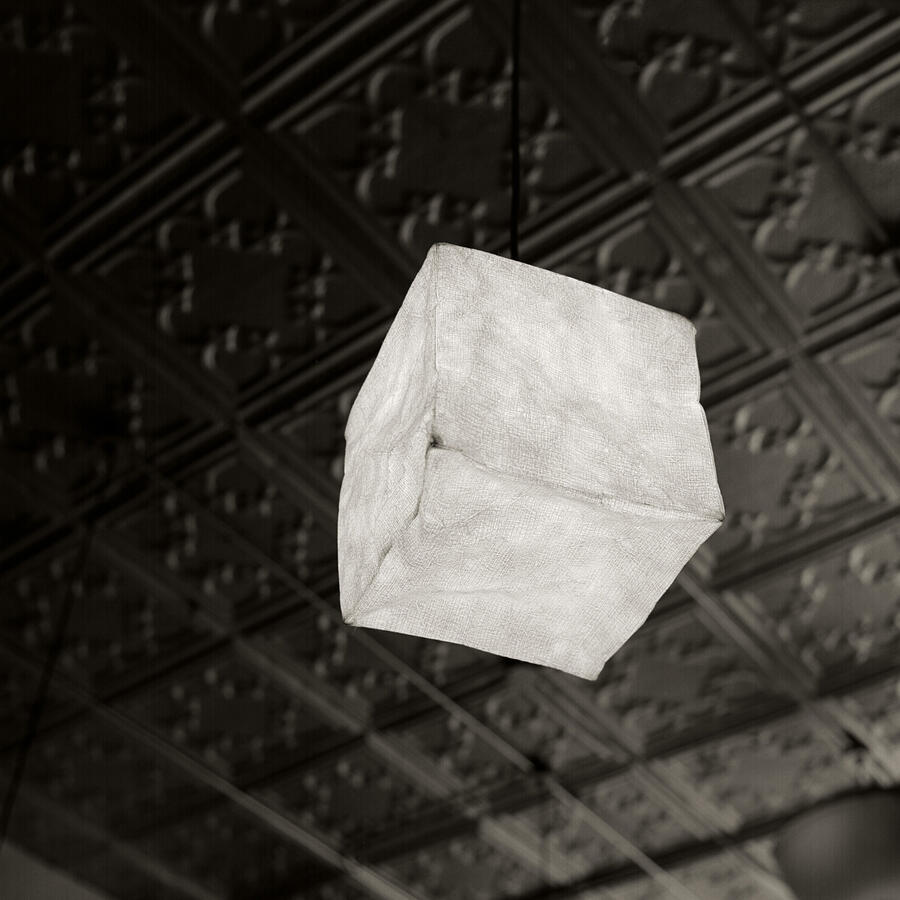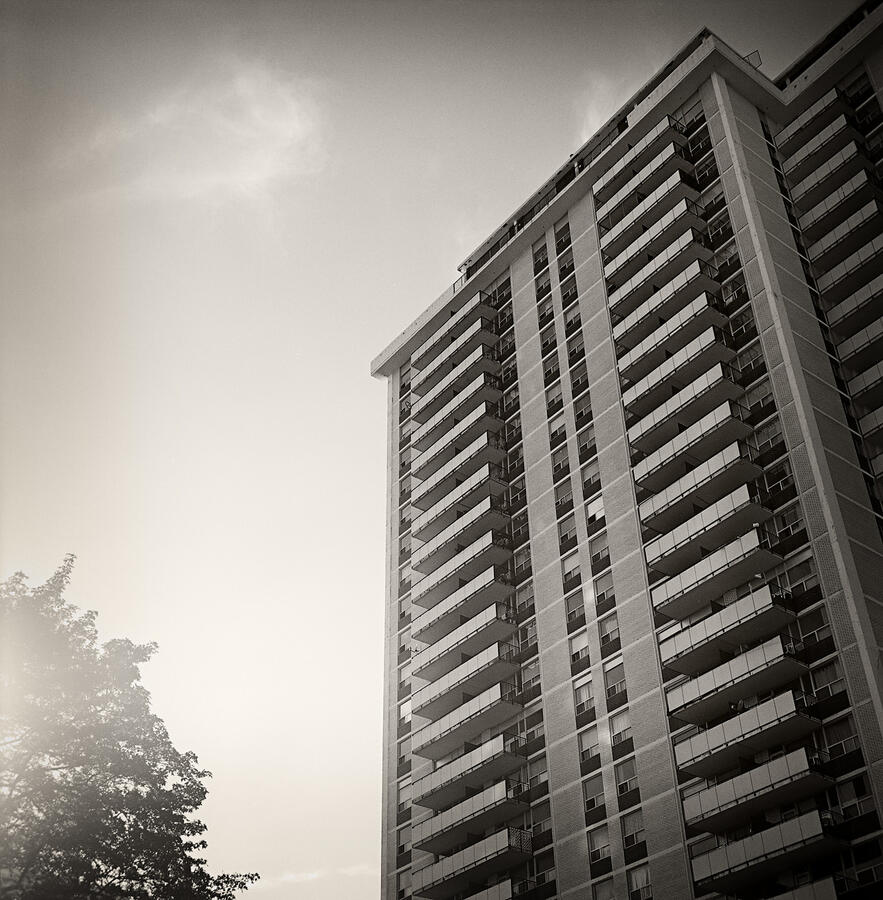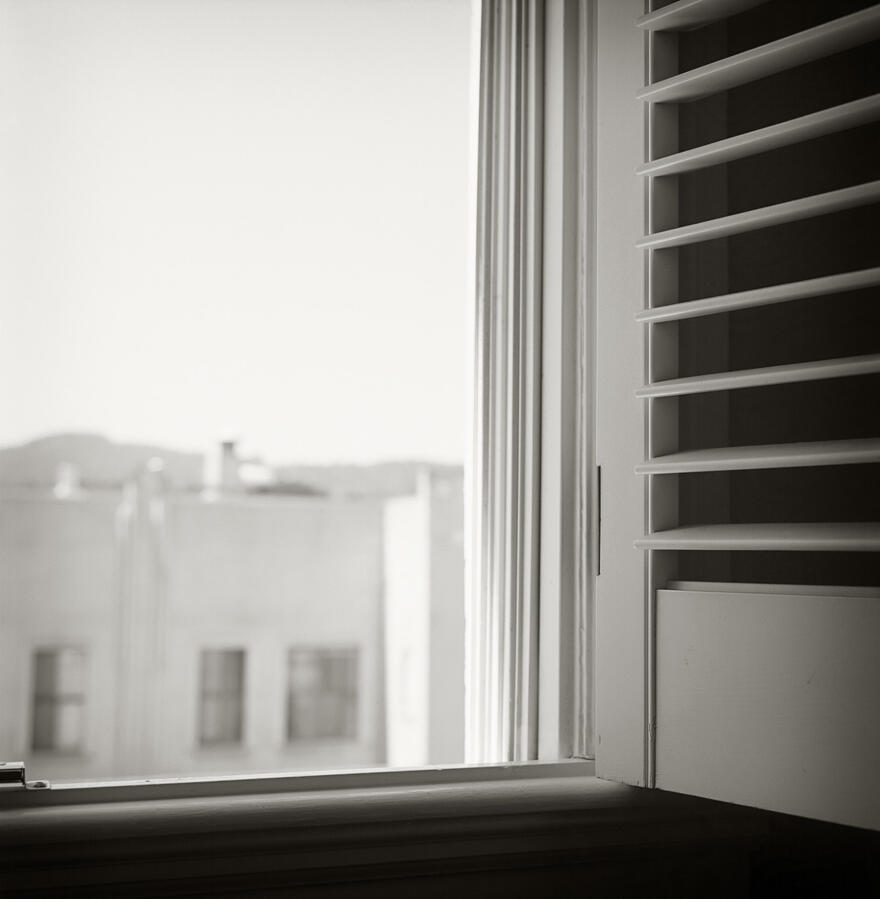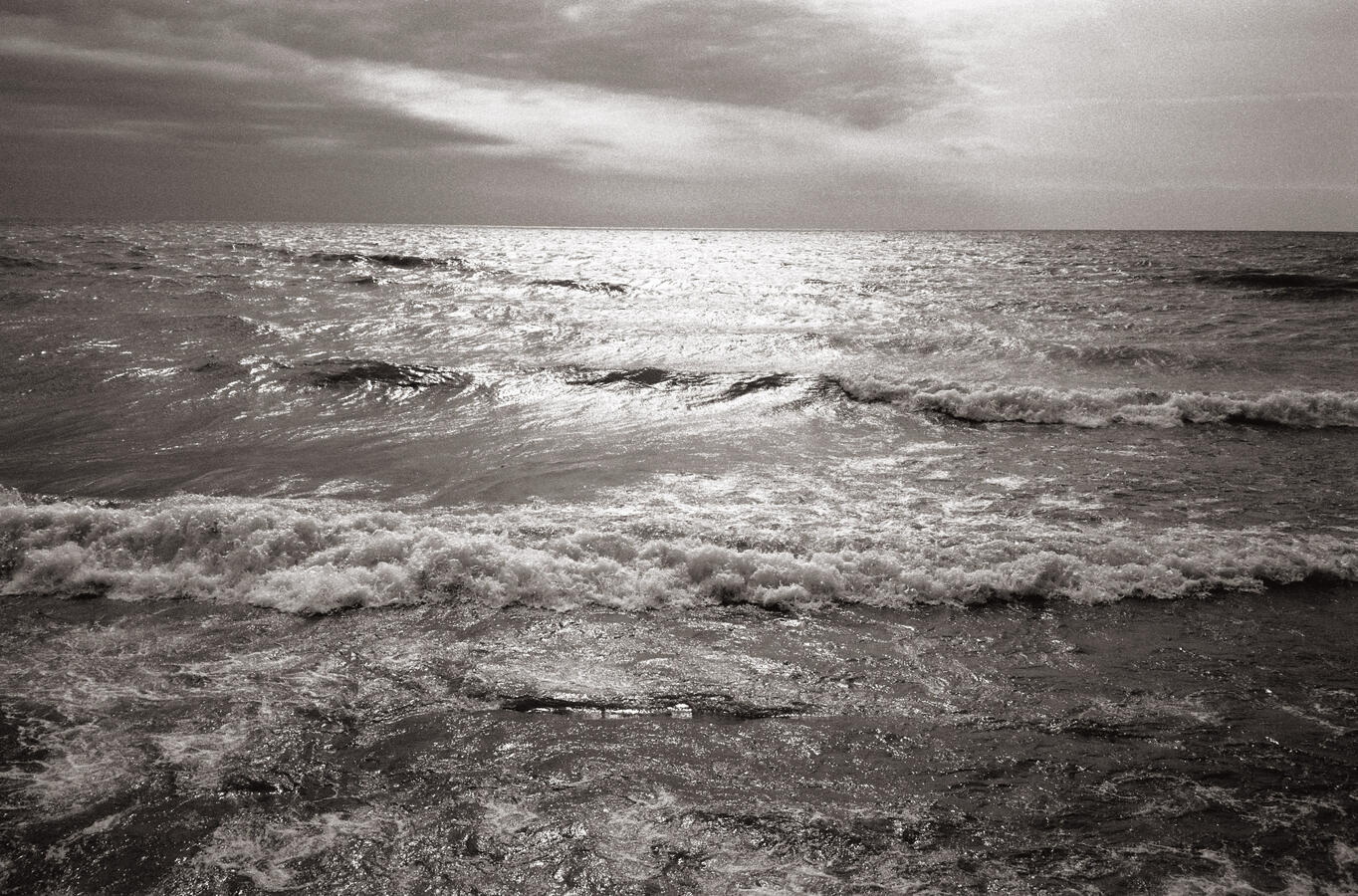Photosensitive
This site hosts a collection of film photography-related articles that I wrote between 2002 and 2006, when I was more active in my photographic hobby. Though I’m no longer adding new content, the archived articles can be browsed through the links below.
Articles
Due to the passage of time and big changes in the world of film photography, much of the information below is out-of-date; while the formulas are still valid, sources of raw materials, particular kits, film types, and even vendors may not longer exist. And because most of the links on the older articles are broken (most of the popular film-photography forums of the early 2000s no longer exist), I have deactivated all of the links. Google is probably an even better resource. Caveat emptor!
My photography
Every image that appeared on my photoblog (which I actively updated between 2004-2009 or so) is available on my Flickr stream.Photographs that illustrate some of the concepts in the articles above are presented here.
B&W Processing Tips for Beginners
Developing B&W film can be complicated, but it’s not rocket science. Ultimately, everyone has their own way of doing things, but sometimes these unique practices come from misinformation or bad habits. With that in mind, here are some tips for those who are new to it all.Conventional B&W film is best developed by you (at home) or by a lab with whom you have a good relationship. If neither of these are possible, you should avoid conventional B&W film and instead use a C-41 process B&W film (like Ilford XP2 Super or Kodak Black and White). The C-41 process is standard, while conventional B&W film processing is anything but, which makes it hard to track down problems and get consistent results unless you know exactly how your film is being treated. The C-41 B&W films are excellent. Use them until you have the time and resources to process your own B&W.The best way to learn how to develop B&W film at home is to take a class or learn in-person from someone knowledgeable. Books and Internet guides are fine, but things like loading film and mixing chemicals are much easier if you can get instant feedback from an expert. Ask someone you know to spare a couple of hours of their time to teach you.If you want to get good B&W results quickly, choose one film-developer combination and stick with it for at least 25 rolls before trying anything new. All of the common B&W films and developers are capable of excellent results and there are no “magic bullets”. If you are getting bad results with your current combination, making refinements to the EI, processing time, temperature and agitation will improve your negatives more quickly than changing to a new film or developer will.Start with a conventional 400-speed film like Kodak Tri-X, Ilford HP5 Plus, or Fuji Neopan 400. The Eastern European films (including the Arista.EDU and EDU Ultra series) are good, but have a smaller user base, so I would avoid them until you have more experience and are able to determine your own developing times. I would also avoid the TMAX films (too sensitive to development variables).Don’t be seduced by ultra-fine grain. Beginners (myself included, many years ago) often search out the finest-grained films they can find. In reality, extra-fine grain can often decrease apparent sharpness in an image (have a read through Edge of Darkness by the late Barry Thornton for an explanation of why this is the case.) Stick with a good 400-speed film — they give you the extra speed you need to be able to work hand-held. When you really need super-fine grain, it’s time to look at larger formats.You do not have use chemicals from the same company that made your film, but you should start with a developer from a major manufacturer so that others can help you troubleshoot when things go wrong. Powder developers are fine if you have a dedicated space to do your developing in and don’t mind a bit of dust in the air — good powder developers are Kodak D-76 or Ilford ID-11, Kodak Xtol (mix with distilled water) and Ilford Microphen. If you are developing in your kitchen or bathroom, a liquid concentrate may be more useful. I recommend Kodak HC-110 (keeps forever) or Ilford DD-X.Rodinal, Ilfosol, Microdol, Perceptol and TMax are probably not good developers for beginners to start with. They all have issues with either extraordinarily coarse grain, short shelf life, or low effective film speed. Diafine is probably also not ideal because while it is easy to use, you don’t learn anything about processing technique or variables by using it.
Beginners should use developers one-shot only for the most consistent results. Dilute stock D-76, ID-11 or Xtol 1+1 with water and dump the working solution after one use. Syrupy concentrates like HC-110 or DD-X should be diluted just before use, used once, and then dumped. (Don’t dilute the whole HC-110 bottle! Make “Dilution B” by mixing the syrup 1+31 with water just before use.) Mix up only the working solution you need for each session.The brand of stop bath and fixer you use is not critical, but try to use odourless stop baths and non-hardening fixers. Hardening fixers make washing films take longer and are not necessary for modern films. To determine fixing time: take a small piece of film (from the leader), dump it into some fixer, and swirl it around a bit. The time it takes for the last trace of cloudiness to disappear from the film is called the clearing time. Multiply the clearing time by three to find the actual fixing time. Hypo clearing agent is not necessary if you use a non-hardening fixer.If you use a non-hardening fixer, follow the Ilford washing method. Fill the tank with water, invert 5 times, and pour it out. Re-fill with water, invert 10 times, and pour it out again. Re-fill with water again, invert 20 times, and pour it out one last time. This method saves a lot of time and a lot of water, but only applies if you use a non-hardening fixer. If you use a hardening fixer like Kodak’s, you will need hypo clearing agent and a much longer wash.The last liquid your film should touch is a solution of wetting agent in distilled water. You only need a tiny bit — 10 drops of wetting agent concentrate per litre of water is good. Soak the film for a minute. This step prevents water spots and mineral deposits. Rinsing after this step defeats the purpose of the wetting agent, so don’t do it!The best place to dry film is a shower stall that has recently been “steamed up” by running hot water for a minute or two. The steam helps to settle the dust in the air. Hang the film in the shower stall from clothespins attached to a stiff wire hanger, using more clothespins on the bottom of the film to weigh it down. Close the shower door and avoid stirring up dust or lint in the bathroom while the film dries.Store processed film in clear sleeves. Get a pack of Print-File (or similar) neg sleeves that have a little frosted window to write notes on. I use this note area to write down the camera, subject, film and developer (with times and temperatures), date, and a serial number for each roll (e.g. 0631 for the 31st roll in 2006). Each frame then has a unique number (e.g. 0631-15 is frame 15 on roll 0631) which you can use for naming scans and prints and lets you find the processing information very quickly (this is David Vestal’s numbering scheme).If you are interested in reading more about B&W processing, I recommend the books by David Vestal, Henry Horenstein, and Bernhard Suess.
B&W Reversal Processing Notes
Rather than being a real article, this page is more of a collection of notes (primarily for my own use) on black-and-white reversal processing formulas. Over the years I’ve been interested in making B&W slides at home, with the goal of making the process as simple and inexpensive as possible. One of my major aims was to come up with a set of formulas based as much as possible on commercial developers and other solutions. With that in mind, here are some reversal formulas that I have tested.Note: These recipes are intended for use by those who are already familiar with black-and-white reversal processing. I am not responsible for ruined film or equipment, poor results, or any damage to your health that may result from your use of these formulas.First incarnation: B&W reversal based on an HC-110 first developer
HC-110 is a versatile developer that can be used for all kinds of purposes (along with standard negative development). Here I’ve boosted it with sodium carbonate to make an active first developer for reversal processing.First developer
6 tsp Na2CO3This developer should be mixed fresh before each use.Bleach
15 ml HC-110 syrup
(2 g KBr – optional)
8 g sodium thiosulfate
Make up to 500 ml with water.
Part A: 4 g KMnO4 in 1 L distilled waterMix equal volumes of A and B immediately before use. It keeps for a few hours at most.Clearing bath
Part B: 55 g NaHSO4 (this is sodium bisulfate, not bisulfite!) in 1 L distilled water
30 g sodium metabisulfite in 1 L waterFogging re-developer
2 g thiourea (thiourea is also known as thiocarbamide)An alternative to this fogging re-developer is to use the “B” (toner) part of an odourless sepia toner kit.Directions: The first developer gives EI 64 with Ilford Pan F Plus developed for 8.5 min at 24C. Bleaching should be carried out for about 5 minutes, clearing for about 2 minutes, and redevelopment for another 2 minutes, though the latter two steps are probably finished much faster than this. Use standard washes between each step.Drawbacks: This method gives nice chocolate-coloured slides (you can use a traditional light reversal if you want neutral blacks) but the permanganate bleach damages the emulsion. Might be good to run the process at a cooler temperature or use some kind of hardening stop bath.Second incarnation: B&W reversal based on Ilford’s procedure
100 g Na2CO3
Make up to 1 L with water.
The “Reversal processing black-and-white film” PDF on the Ilford website describes a reversal method using developers based on Ilford PQ Universal or Ilford Bromophen (both paper developers). I modified their recipes and procedures slightly for best results.First developer
Ilford’s version: Ilford PQ Universal diluted 1+5 with water containing 12 g/L sodium thiosulfate (for FP4 Plus).Bleach
My version: Use 8 g/L sodium thiosulfate instead.
Ilford recommends a standard permanganate bleach.Clearing bath
My version: sodium bisulfate (65 g/L) and potassium dichromate (10 g/L) in distilled water.
The use of a dichromate bleach requires a sodium sulfite clearing bath — I use 5% aqueous sodium sulfite.Fogging re-developer
Same as the “first incarnation”.Directions: I follow the Ilford directions on this one but give FP4 Plus 9 mins at 20C in the first developer (Ilford recommends 12 mins). My preliminary experiments seem to indicate that this gives an EI of about 100 give or take half a stop. The dichromate bleach makes the emulsion much more resilient but this may make it harder to do the final wash.
Easy Film Developers
Here are some easy-to-mix developers that use phenidone and ascorbic acid as developing agents. As with all my articles, I assume you know how to safely mix developers. Do not mix these formulas if you cannot deal with chemicals properly.
I edited this article in June 2007 to eliminate outdated / unclear information.Patrick Gainer’s developers: PC-TEA and PC-GlycolThese are versatile developers that give high acutance and moderate grain. They are also exceedingly simple to mix, and the stock solution will last for a long time (at least 2.5 years, in my experience). The formulas below are the standard recipes Pat Gainer is currently recommending (older versions used slightly different chemcial proportions but work almost identically).PC-TEA
Stock solutionStart with 75 ml of hot triethanolamineWorking solution: Dilute the stock solution 1+50 (20 ml per litre) with water before use. Developing times for 400-speed B&W films are around 9 min at 22C.PC-Glycol
9 g ascorbic acid
0.25 g phenidone
Stir until completely dissolved, then top up to 100 ml with triethanolamine
Stock solutionStart with 75 ml of hot propylene glycolWorking solution: Dilute the stock solution 1+50 (20 ml per litre) into water containing 5 g/L sodium carbonate before use. (You can also use sodium metaborate or borax, but you will need to adjust the quantities and your dev times will be longer.) Developing times for 400-speed B&W films are around 7 min at 21C.Notes: The working solutions of both PC-TEA and PC-Glycol are dilute in terms of developing agents (comparable to Xtol 1+3), but have relatively high alkalinity. In general, I find that PC-TEA gives finer grain than PC-Glycol. This may be due to a combination of gentler action (PC-TEA is much less alkaline than PC-Glycol with carbonate) and the mild silver solvent effect of triethanolamine.XTOL replacements: MYTOL and Instant MYTOLMYTOL
10 g ascorbic acid
0.25 g phenidone
Stir until completely dissolved, then top up to 100 ml with propylene glycol
This formula was developed by Paul Lewis. Use it as you would use Xtol. I have taken the formula from APUG.org.Start with 750 ml waterSodium ascorbate can be generated from ascorbic acid as follows: 13 g of sodium ascorbate is replaced by 130 ml of a solution made by dissolving 88.9 g sodium bicarbonate and 42.5 g ascorbic acid in 1000 ml water (careful of fizzing — allow it to complete). This solution goes off quickly. Take your 130 ml and dump the rest, or scale down accordingly.Instant MYTOL
60 g sodium sulfite (anhydrous)
4 g sodium metaborate 4H2O
13 g sodium ascorbate
0.15 g phenidone
3 g sodium metabisulfite
Water to 1000 ml
As described in this blog post, I’ve devised a method to mix MYTOL that does not require sodium metabisulfite, uses commonly available ascorbic acid instead of sodium ascorbate, and optionally replaces sodium metaborate with triethanolamine (a better buffering agent at the target pH).Stock solution in water:Start with 750 ml waterWorking solution: Use as you would use XTOL (diluted 1+1, usually).Stock solution in propylene glycol / triethanolamine:
60 g sodium sulfite (anhydrous)
11.5 g ascorbic acid
0.15 g phenidone (pre-dissolved in alcohol to aid dissolution)
13.4 ml triethanolamine or 7 g sodium metaborate
Water to 1 LStart with 13.4 ml hot triethanolamineStir until all solids have dissolved (it will take quite a while, and may require the addition of 1-2 ml of water). Dilute with hot propylene glycol to a final volume of 50 ml.Working solution: The stock solution should keep indefinitely. For use, dilute 1+19 with water containing 60 g/L sodium sulfite — the resulting solution matches the activity of stock XTOL. To create something like XTOL 1+1, dilute 1+39 with water containing 30 g/L sodium sulfite.
25 ml hot propylene glycol
11.5 g ascorbic acid
0.15 g phenidone
How I process and scan film
Several people have e-mailed me recently, asking for information on the techniques I use to process and scan my film. Here are some of the details of my own particular “workflow”.Preparation. I develop B&W film in my kitchen, without a darkroom. In fact, I haven’t had a permanent darkroom since I was a teenager. Instead, I use a black cloth changing bag to manipulate the film (loading reels and bulk loaders) in complete darkness. I load the film onto stainless steel reels and then insert them into stainless steel tanks. Some of my reels and tanks are Nikor brand, but most are no-name versions. All were bought second-hand. I prefer stainless steel tanks and reels as I actually find them easier to load than plastic reels, and they use smaller volumes of chemistry per roll.Chemistry. Recently, the developers I am using most often are Instant MYTOL (“1+1” dilution) and Barry Thornton’s two-bath developer. Both are described elsewhere on this site (click on the links) and are favourites for their mix of convenience, quality, and economy. I occasionally use Rodinal for extra-slow films or in medium format (I find it too grainy for most 35mm film), and PC-TEA when the mood strikes. The stop bath is diluted Ilfostop, a weak citric acid solution, or just plain water. Fixer is Ilford Rapid Fix, diluted according to Ilford’s instructions. I do not use a hypo clearing agent. I use Photographer’s Formulary wetting agent.Processing. I develop my films mostly “by the book”, agitating with 2-3 inversions every minute. I aim to develop at 22C most of the time, but I do not do anything special to keep the temperature constant after the developer has ben mixed at the correct temperature. I do not adjust the stop bath or fixer temperature at any point, unless there are gross deviations from the developer temperature. I estimate fixing time by checking the clearing time for a piece of scrap film and tripling this value.Washing. I use Ilford’s wash method, which saves time and water. I do not use a hardening fixer (there is no need to), so wash times are kept short and hypo clearing agent is not required.
Final rinse and drying. I dilute Photographer’s Formulary wetting agent in distilled water at the rate of about 10 drops per litre and soak the film for a minute or two. I then hang the film in a freshly steamed shower stall, using clothespins attached to a wire hanger suspended from the shower head.Filing. I cut the negatives and store them in Print-File sleeves. Each roll gets a serial number, such as 0716 (the 16th roll developed in 2007), and so each frame number has a unique frame, e.g. 0716-22 (frame 22 on roll 0716).Scanning. I use a Minolta Scan Dual II (a very old scanner, ca. 2001) for scanning 35mm film, and an Epson Perfection 4180 for scanning 120-format. I scan on the highest available resolution with the Minolta and at 1200 or 2400 dpi for the Epson. Both scanners are driven by Vuescan. B&W film always gets scanned as a 16-bit grayscale TIFF in “colour slide” mode, which preserves all the information on the negative. I have found no advantage to scanning in colour, or at higher resolutions on the 4180.Photoshop work-up. The scanned files are brought into Photoshop 7, “inverted” to create a positive, cropped as needed, and then trimmed with the Levels tool (black and white point adjustments) to fill the histogram completely with the available image values. This ensures that I get a clean white and clean black in the image. I often do a small Curves adjustment at this stage to make the positive look more realistic (this is a fault of the Invert tool, which does not provide a photographically realistic inversion of values). I then convert the image to 8-bit mode, make a duplicate layer and run the Polaroid Dust and Scratch Removal tool (followed by a manual dust clean-up).Until recently, the next stage of image processing was a Curves adjustment layer, followed by Unsharp Mask on the duplicate layer. However, I’ve recently taken to increasing edge contrast with an Unsharp Mask on the duplicate layer with settings 30% / 30 pixels / threshold 3-5. This gives the illusion of greater edge sharpness — restoring what’s lost in the scanning process — while avoiding “sharpened grain”. Sometimes I follow this sharpening step up with another Unsharp Mask at 100% / 1 pixel / threshold 0 and/or a slight Curves tweak on an adjustment layer. Darkroom-type manipulations I often use are Curves adjustment layers on masked parts of the image (to simulate local burning and dodging), edge burning (also using a Curves adjustment layer on the edge of the image), and image toning using the TLR B&W toning action set. I make liberal use of the Feather tool for layer masks to make the transitions seem more natural.File saving and archiving. Files get saved in full resolution as PSD files (with layers intact) and JPEGs (with layers collapsed). The shrinked JPEGs are what make it to my site, via Flickr.I hope this description of my personal workflow helps whoever finds it.
Methods for producing B&W slides
Black-and-white slides seem to be of interest to more people than just me — the topic comes up with some regularity on photo.net and the various photography-related USENET groups. I decided to collect a list of methods on this page to refer people to. More links to follow.Please bear in mind that I haven’t tried most of these. I would be interested to hear your comments, though! I encourage all who are interested to check groups.google.com and the photo.net archives for more info about these processes, as well as the sites I link to below.I do not mean to infringe on any trademarks or copyrights in this page. All product and process names are the trademarks of their respective owners.Agfa Scala Film
A special 200ASA B&W film developed by Agfa for reversal processing. The film was developed via a proprietary process by a few labs, and Agfa offered mailers (about $6 each). Except for some specialty products, Agfa films — Scala included — are no longer being made. This effectively eliminates Scala as an option for B&W slides, unless you have old stock lying around. Some labs are still running the Scala process, but I couldn’t find a list of them. The DR5 Lab in Colorado will develop any Scala in their own process.Pros: Results are reportedly very good. Someone else does the processing (this is a con for many people) which can be relatively cheap. Cons: Film is expensive. Process is proprietary. Reliance on mailers unless you have a lab nearby. Only one type of film.DR5 process
A small lab in Denver, Colorado (USA), DR5, has optimized reversal processing and offers a process which turns ordinary B&W films into positive transparencies. They are also able to develop Agfa Scala in their process.Pros: Everyone who has tried this process reports excellent results. A wide variety of B&W films can be used. Different options available (push, image tone, etc.) Cons: Only one lab does it. Process is proprietary (you cannot do it at home). Quite expensive (about $13 per roll plus shipping).Reversal-processing B&W film at home
Normal B&W film is exposed and then developed in a sequence tht gives rise to B&W transparencies. The B&W film is developed, the resulting negative silver image is bleached away, and the remaining silver halide is then exposed to light and developed to give a positive.
There are tons of DIY formulas for this process out there, and they are all variants on the same basic theme — a Google Groups search on this topic should turn up a lot of recipes from the USENET archives. Searches at sites like Photo.net and APUG will also turn up useful info. Formulas and kits from commercial sources are also available.1/ Have a look at the Ilford fact sheet on reversal processing (warning: PDF file) — I have tried this method, and with a little tweaking, it works well.2/ Kodak makes a T-MAX 100 Direct Positive kit designed for reversal processing of its TMX film rated at EI 50 — I have read mixed reviews of this kit.3/ The Photographer’s Formulary sells a comparable kit.4/ The Czech company Foma makes a reversal kit and a film (Foma 100R) (warning: PDF file) to go with it.5/ Finally, there is also a kit made by Tetenal but I believe it is not available in North America.6/ Processes from Alessandro Serrao, Jens Osbahr [PDF], Julio from Montevideo.Pros: Many recipes available that can be used at home and fine-tuned. Chemicals purchased in bulk make it inexpensive. Cons: Requires familiarity with standard B&W film processing. Need to be able to mix chemicals at home. Some are very toxic (bleach in particular). Only slow films work well in this process. Gray tinted film base reduces contrast in final positive.Cross-processing Ilford XP2 in E6 chemistry
Ilford XP2 chromogenic B&W film is cross-processed in E6 chemicals to produce B&W positives.Pros: Film and processing are relatively cheap. Cons: Resulting positives are reportedly green in colour. Labs may balk at cross-processing. Results seem to be variable.Copying negatives onto a duplicating film*
Negatives are either re-photographed or contact-printed onto a duplicating film designed for this purpose. The preferred films for this are Kodak Fine Grain Release Positive film, available for about $16 per roll as a 100′ 35mm bulk roll (Kodak 5302) or in 8×10 sheets for much more, or Kodak Technical Pan film. Re-photographing can be done using a slide duplicator or macro lens (exposures need to be bracketed, and the duplicating films are slow). The duplicating film is developed in a paper developer. There is a lot of information at Luca de Alfaro’s page, plus in the http://www.photo.net archives.Pros: You get both a negative for printing AND a positive for viewing. Versatility to select which frames to duplicate. Results are sharp and fine-grained (I tried it). Duplicating film is cheap. Cons: Image quality depends on optical quality of duplicating device. Overall losses occur due to ‘losing a generation’. Dust may cause problems. Duplicating film may be hard to find (electron-microscopy supply houses worked for me).Modified E6 processing of colour slide films
Regular slide film is processed in three-bath E6 chemistry, substituting a toner for the colour developer. The process is outlined at profotos.com. The silver halide left undeveloped by the first step is toned in the second step, and the unwanted silver negative image is bleached away at the end. This is a variation on the standard B&W reversal process.Pros: Slide film has a clear base, unlike B&W negative film. Process uses commercially available chemicals (the toner comes from sepia toning kits). Results are sharp and rich. Cons: Standard quantities of silver solvent in E6 first dev are insufficient and lead to fogged highlights in this process. Requires E6 kits and home development, which can be a pain. Developer has a short life. Slide films are more expensive (not if you get them outdated for cheap, though). I have tried this method, and while it looks good on paper, it’s more difficult in execution. Apparent film speed is very low due to the general staining of the silver negative with sulfide sources. The tin(II) chloride method would probably be superior.“Slides from negatives” service from chromogenic B&W film
A commercial lab makes positives out of chromogenic negatives such as XP2. John Eyles reports that Dale Laboratories will do this work at the time of processing. The cost is about $8.50 per roll over and above the film development cost.Pros: Commercial lab does all the work. Film is readily available. Relatively inexpensive. Cons: Produces unpredictable colours — anywhere from blue to sepia.Polapan film
Polaroid made a 35mm black-and-white positive film that was processed using a Polaroid auto-processor (basically a black box with a crank) and a small processing pack — the auto-processor winds the film around a chemical-coated plastic strip from the processing pack, which initiates an “instant” development process. The film is/was sold with the processing pack in a single box. This film had been discontinued even before Polaroid went out of business. I was given some old film by a friend and found a processor at a photo-outlet centre.Pros: Fairly simple to use. Very fast process. The slides have nice tonality and are relatively tolerant to overexposure. Cons: Users must track down a supply of the film and a processor. Film is very grainy and has a blue tint. Film base is very fragile and prone to scratching.
Processing colour slides at home
Note added June 2006: This article was originally written in December 2002, and some of the information in it is now out-of-date. In particular, the availability of small E6 kits is changing all the time, and as camera stores scale back their darkroom offerings, thesy can become increasingly hard to find — even if they are still being made. Your best bet is to purchase from large mail-order shops like B&H, Adorama or Freestyle.For one user’s step-by-step guide to colour reversal at home (your kit may vary), have a look at yarki.net.Processing B&W film at home is a no-brainer because it’s very simple and much cheaper and better quality than from a commercial outlet. I have processed E6 (slide film) at home as well. It is not nearly as hard as people make it out to be. The big differences between E6 processing and B&W processing are:1/ E6 is a standard process with standard times and conditions. No playing around with different developers, times, dilutions, etc. here. B&W by contrast (no pun intended) is much more loose. The E6 chemicals come in kits, no mixing and matching.2/ Temperature control is much tighter. B&W can be processed at about any temperature but E6 needs to be tightly controlled at 38C for at least the first step. There is room for variation in later steps.
3/ Agitation is more frequent, every 15 seconds or continuous for E6 instead of once or twice a minute for B&W.4/ The colour slide chemicals go bad far more quickly than B&W do. Count on two weeks, tops, once mixed.
If you are new to developing your own film, do not start with slide film. Master B&W first. Also, my aim here is to rant rather than provide explicit directions. You should get a good book like Basic Darkroom Techniques by Grill and Scanlon to learn the basic steps. These authors describe how to process film at home using easy instructions, with pictures. I’m sure there are lots of other good books out there, but I haven’t seen them.What you need that you might not already have
Since you already do your own B&W at home (right?), you have most of what you need. Here are some things that may be different:1/ The tank and reels — stainless steel is best because it conducts heat better. In addition, many kits provide only 500 ml of developing solution. This is enough to cover two 35mm reels in a stainless steel tank, but not in a plastic tank. Plastic tanks need about 650 ml for two rolls. (Note: Several people have since pointed out to me that the plastic Jobo tanks can develop two 35mm rolls with 500 ml or less of solution. As far as I know, though, none of the Paterson-style tanks can get by with just 500 ml.)2/ The chemicals — various manufacturers (Tetenal, Beseler, Kodak, etc.) make kits, either six-bath (the traditional E6) and three-bath (a simplified E6). The kits are available in different sizes. I like the 500 ml Tetenal kit, which processes six 36exp 35mm rolls of film (in three runs with two rolls each). There is an offer available from Tetenal for introductory pricing on their 500 ml three-bath kit. I don’t want to link directly to this offer page, but a google search for tetenal 50% off should reveal it. Tetenal is distributed by Jobo in the USA. Otherwise, try your local darkroom supplies store or B&H, Adorama, Freestyle or your other favourite vendor. The three-bath kits cost about US$15 to US$20 depending on where you purchase them. In Canada, the Agfa kits seem to be widely carried — I have seen them on the shelves at Royal Photo in Montreal and at Henry’s in Toronto.3/ The thermometer — you need to be able to read this quickly and accurately to within a fraction of a Celsius degree.4/ The temperature moderating system — you need to be able to maintain the temperature at 38C +/- 0.5C. I use a cheap sytrofoam cooler I bought at the supermarket for $3 and fill it to a depth of about 10 cm with water, balancing hot and cold until I hit the right temperature. The container is well-insulated and keeps things warm so that minimal intervention (i.e. adding more warm water) is required. There will be a temperature drop over the time you need to do the E6 process (which is about 30 mins) but steps that follow the first one are less temperature-sensitive anyway.
While I’m here: a note about Jobo processing systems. Many people read on the Net that a Jobo system is required to develop slides at home. Not true, though I’m sure it helps. For all of you who are wondering what a Jobo system is (I did once): the Jobo company makes a series of processors of varying sophistication that automate some or all parts of the film developing process. At minimum they seem to consist of a system that agitates the tank and a thermostatted water bath that keeps the solutions and tank at a constant temperature. The more complex ones will fill and empty your tank for you, too. They are expensive by home darkroom standards — several hundred US dollars and up. You can definitely get by without one, as I describe.5/ Rubber gloves, like the kind you use for household chores. This stuff’s way more nasty than B&W chemicals are.6/ Containers to mix and store your chemicals and something to mix them with.Comments on the processGratification. Unspooling a roll of colour positives from your developing reel when the process is done provides way more instant gratification than the end of the B&W process does. You can see your final results, right there, right then.Cost. The math works out to $15 to $20 for a small kit / 6 rolls per kit = $2.50 to $3.30 per roll. (American dollars here.) If you mount them yourself, count on about $2 for enough mounts to do the whole roll — or take them somewhere to get mounted. Total: $4.50 to $5.20 per roll. This is assuming you didn’t have to buy much new equipment. Sometimes I mount the slides myself, and sometimes I take them to a pro lab to be mounted. Of course, you don’t have to mount them — you can sleeve them, like negatives. This would be appropriate if you’re just going to use a film scanner on them and not project them. The cost including mounting works out to about the same as using Kodak or Fuji mailers. It then becomes a question of how anxious you are to see your results, versus how much free time you have to do the actual processing, versus your faith in the mail system… and so on.Push processing. I charge myself absolutely nothing for push-processing. With pro labs, costs for push-processing can very quickly add up.Control. Any mess-ups are my fault. (In addition, the individual solutions can be tailored to colour-match with particular batches of film, something that a pro lab wouldn’t want to be bothered to do. I suspect this is more of an advantage for heavy users, though, and is probably not so applicable to the three-bath system. Thanks to Gregory Blank for pointing this advantage out to me.)Shelf-life. E6 chemicals have a short shelf life — much, much shorter than B&W chemicals do. I like to use up the entire 500 ml kit in one or two days. This makes for a lot of processing in one day and it gets tiring. You need to take this into account, and if you only have one or two rolls to do at once, it doesn’t pay to do them yourself. However, if you have a bunch of rolls to process at once, or can wait until you do, it’s worth it.Time. The process itself takes about 40 minutes but mixing up the chemicals and getting the temperature right takes more time initially. The more times you do it, the more confident and faster you’ll get.Automated processors. Companies like Jobo make automated processors that do a lot of the work (agitation and temperature control) for you. See my comments above. If you shoot a lot of film and live far from a good lab, these things can save you a lot of time and money in the long run. They take a lot of the physical effort out of doing E6 at home because they do all the agitation for you. However, they’re far from necessary for doing E6 and perfectly good results are achievable by hand.Note added April 2008: There is a lot of discussion on the Net about 3-bath and 6-bath E6 kits. The E6 process formally has six chemical steps (hence the name); the 6-bath kits treat each step separately, which allows you to adjust times, temperatures, and pH levels of each step separately to correct shifts. All commercial labs run this “true” E6 process. The 3-bath kits combine some steps together to reduce the number of individual solutions, and the result is both a loss of chemical control over the individual steps and shortened working life. However, the storage requirements and kit sizes (1 L vs. 50 L) might make the simplied process more attractive for first-timers.There are many comments on the Web that the 3-bath process produces inferior results to the true, 6-bath E6 process. After developing 12-15 rolls of slide film in the Tetenal 3-bath kit, I can say that this hasn’t been my experience. If you get a fresh kit and mix it as directed, using all solutions promptly and following Tetenal’s instructions, you will get good results.Is processing slides at home really worthwhile?
In a word — yes, it’s worth trying at least once. Depending on where you get your slides done currently, it can mean a huge amount of cash saved over the long term. On the other hand, it can also get to be a major pain. In late June 2002 I processed six rolls of Fuji MS100/1000 (purchased out-of-date from Freestyle in Los Angeles and bulk rolled) in one evening — three cycles of two rolls each using the Tetenal kit, one after another, following the included instructions exactly. I started at 8 p.m. and didn’t finish up until almost 1 a.m. I was hot and sweaty (from all the agitating, pouring, etc.) and the bathroom smelled like bleach-fix. My fiancée was ticked at me for tying up the bathroom for so long (“just hold on until this last wash is finished”). I was so exhausted that I vowed to place an order for a bunch of A&I mailers the next day. On the other hand, seeing the six rolls of bright, colourful transparencies hanging in the kitchen was magical. So it’s a toss-up sometimes. If you have lots of money and not much time, or if you’re taking pictures for money, a pro lab is probably the way to go. But if you are a poor student subsisting on cat food … um, well, then you should try doing your own E6, or reconsider your priorities!Last updated December 2nd 2002
Moskva 5 Tips
The Moskva-5 is a medium-format folding rangefinder camera that was made in the late 1950s by the KMZ company out of the USSR. It is apparently a copy of the Zeiss Super Ikonta C, its production being facilitated by the theft of tools, parts and plans from the Zeiss manufacturing facilities in occupied Soviet-occupied Germany at the end of WWII. It makes eight 6×9-cm images on 120-format rollfilm. Some Moskvas come with an insert that masks the film opening to 6×6 cm (more on this below.)You can buy these cameras on eBay for $60 to $80 and they are a decent introduction to medium format. There is a LOT of info on the Moskva at the Medium Format Camera Pages (thanks Bob Monaghan for so much valuable work). Here are some tips I’ve used to get good results from the Moskva (many of them will apply to other folding cameras):Be careful when using the 6×6 mask. I used mine and got good results with some films, whereas with others the negs got all scratched up by burrs or imperfections in the metal. Be careful.Wait to do the final winding-on of the film until just before you take the picture. This gives the film an extra little tightening, keeping it flat. (Thanks to Chuck Miller for this tip.)Parallax is a problem. What you see through the viewfinder is not necessarily what you will get in the image, since there are many angles through which you can look through the viewfinder. The discrepancy will be most noticeable for close-up images. Compose “generously” and crop when printing.This lens does not do well at large apertures. I find that f/11 is noticeably sharper than f/8, which may be the result of a mis-aligned rangefinder. Stop down as much as you can.The tripod socket on these cameras is for European-style tripods, which uses a 3/8″ diameter screw. You can get adapters to convert these to the North American-style 1/4″ socket. Check eBay. They only cost a few dollars.Charts, guides and rules of thumb are helpful in overcoming the limitations of the Moskva (lack of light-meter, tricky focussing, etc.) For example, there are lots of DOF calculators online (such as DOFMaster) that can be used to determine hyperfocal distances for different film formats. The Ultimate Exposure Computer is also very useful.Originally prepared February 2003, updated June 2006
Pyrocat-MC
Pyrocat-MC is a new staining B&W developer, formulated by Pat Gainer and Sandy King and based on Sandy’s Pyrocat-HD, that is made up as a stock solution in propylene glycol. (Staining developers are those which cause the gelatin that supports the emulsion to be “tanned” by the by-products of the development process. This stains the film in proportion to the extent of development that has taken place in a particular area — you get a silver image and a stain image. The stain itself is orange or yellow in colour and is somewhat opaque to the light used for making prints, which has the effect of smoothing out grain during printing. In addition, the stain is often very opaque to UV light, making stained negs very useful for printing in platinum or other iron-based processes, which are sensitive to UV.)The recipe
Pyrocat-MC is mixed as a stock solution (part A) in propylene glycol. The stock solution is mixed with an activator (part B) and diluted in water just before use.The formula of Pyrocat-MC Part A is given by Pat Gainer as the following:2.5 g metolMix with about a few ml of water until a thin slurry is formed, then add:
4.0 g ascorbic acid
7 ml triethanolamine100 ml warm propylene glycolThe activator (Part B) is traditionally a solution of 750 g potassium carbonate in 1 L of water. The working solution is then formulated as 1+1+100 (Part A:Part B:water). However, I used the sodium carbonate activator, 200 g sodium carbonate in 1000 ml water. The working solution is then formulated as a 1+5+94 mixture.Sandy King’s article describing Pyrocat-HD (the original developer) is hosted at at UnblinkingEye.com. The original description of the Pyrocat-MC version is at this APUG.org thread. The information sheet from the Photographer’s Formulary (who sell a pre-made Pyrocat-MC kit) can be found in this PDF file.
50 g catechol
Keep the solution warm and stir until the catechol dissolves, then make up to 1 L with propylene glycol.
